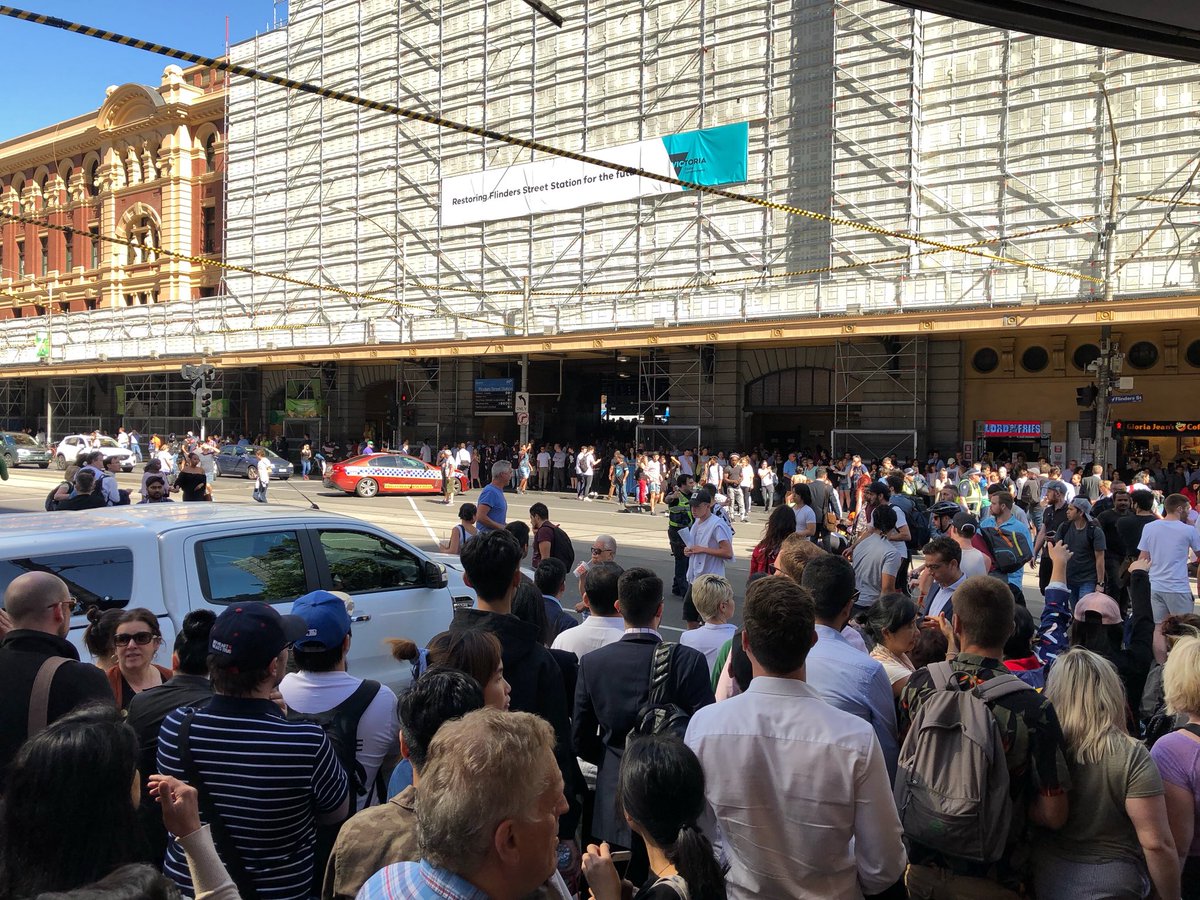Last updated on December 31st, 2017 at 06:32 pm
As I write this, news is coming in of another runaway vehicle mowing down pedestrians on a busy street. This time in Melbourne. No details yet other than the police have arrested the driver.
If this is an act of terrorism or a tragic accident, there is a way of preventing these events.
Ban drivers from city centres and legislate provision of driverless cars and trucks to service those areas.
The technology exists. Lobbyists from the legal and insurance industries have muddied the waters for more than a year.
Who is liable if a driverless car hits a school outing? Google, Tesla and other manufacturers have already offered a global liability policy. This is a moot question. There will be fewer accidents once human error is removed.
A favourite thought experiment in ethics is the Trolley problem.
There is a runaway trolley barreling down the railway tracks. Ahead, on the tracks, there are five people tied up and unable to move. The trolley is headed straight for them. You are standing some distance off in the train yard, next to a lever. If you pull this lever, the trolley will switch to a different set of tracks. However, you notice that there is one person tied up on the side track. You have two options:
- Do nothing, and the trolley kills the five people on the main track.
- Pull the lever, diverting the trolley onto the side track where it will kill one person.
Which is the most ethical choice?
So how do we program an autonomous vehicle to choose between these options?
You can’t. And you shouldn’t.
You can significantly reduce the incidence of requiring this choice by using autonomous vehicles. As the network effect grows and all vehicles are autonomous, the risk to life and limb even by humans running on to a highway is greatly reduced.
If you want the joy of handling a vehicle you can use a track or part of a country road where individual motorists can test their skill. This is akin to flying a private aircraft or microlight. Drivers can still drive for pleasure when they do not pose a risk to others.
This is a reason drones and microlights are not allowed to fly near major airports. The risk is too high. Same thing with drivers of vehicles or trucks.
Hacking Driverless Cars
Update 31 December 2017
A few people have raised the risk of hacking internet enabled vehicles. Surely the terrorists will then hack any and all the vehicles to weaponise them?
There are fewer vehicle manufacturers than there are banks, and yet most of us trust our banks’ internet and mobile services. The notable exceptions are the tinfoil hat brigade, doomsday preppers and those who value extreme security over any convenience (many with good reason). The same applies to contactless credit cards (aka tap n go). This is part of the ongoing, long-running security arms race in technology. I back the good guys on this. Sure there is a hacking risk, but apocalyptic scenarios aside, most zero-day vulnerabilities are found by the good guys.
Even the notorious WannaCry ransomware outbreak of 12-15 May 2017 could have been prevented by patching their Windows OS or by not using end-of-life Windows OS. Given motor vehicles need annual registration, current patches can be mandated and no vehicle on the road has end-of-life software.
What about the Road Death Toll?
In Australia according to Bureau of Infrastructure, Transport and Regional Economics (BITRE) in the 12 months ended November 2017, there were 1,209 road deaths. This is a 5.0 per cent decrease compared to the total for the 12-month period ended November 2016. The rate of annual deaths per 100,000 population stands at 4.9. In the USA 2016 fatalities were 37,461 and 11.59 deaths per 100,000 population according to Wikipedia.
I don’t have a breakdown of single car deaths or pedestrian deaths, but all of those would be eliminated. Most multi-vehicle accidents would also be prevented. Let’s say a 50% reduction, that’s 600 Australians and 19,000 US citizens. Add in UK, Germany (heck all of Europe was nearly 85,000 fatalities in 2013). And that’s just fatalities!
What about serious injuries? We’re banning people using a mobile phone while driving, why are we allowing driving at all?
If terrorists killed or maimed 10% of our road death tolls there would be calls for governments to do something™, or a revolution.
Okay, this is an extreme and unpopular argument. But for x% of drivers in y% of scenarios there is no need for citizens to drive anymore. I’d guess the percentages would meet or exceed the Pareto Principle (aka 80/20 rule). So 80% of people don’t need to drive. Of the 20% that must drive 80% of their driving could be automated.
Next Steps
If you like my idea, please share it using the social buttons below. Add a comment below to let me know.
If you dislike my idea, please comment or let me know in some way. I’m not looking for an echo-chamber here folks.
Please comment, tweet or message me with a link to a Generalised Pareto Distribution on Motor Vehicle Accidents. I’m sure xkcd has one in the archives.
I’ll keep updating this post with additional information and ideas.






